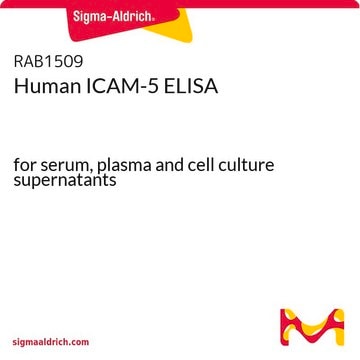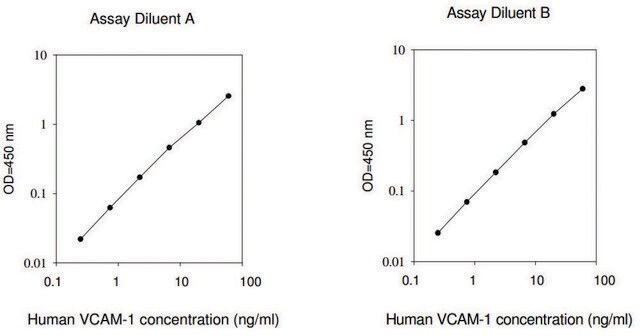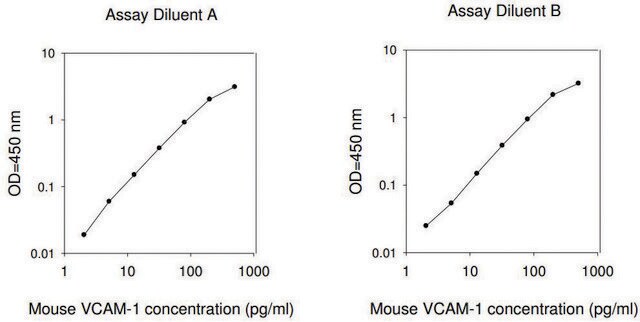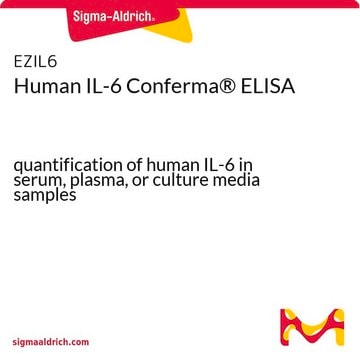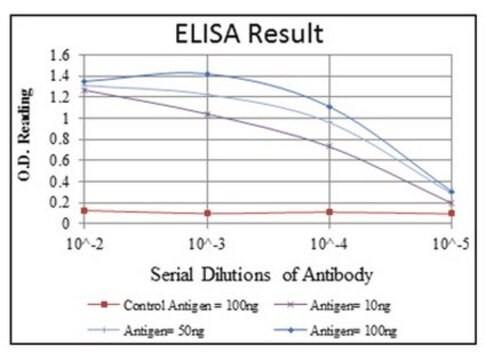RAB0220
Mouse ICAM-1 ELISA Kit
for serum, plasma and cell culture supernatant
Wybierz wielkość
2600,00 zł
Wybierz wielkość
About This Item
2600,00 zł
Polecane produkty
reaktywność gatunkowa
mouse
opakowanie
kit of 96 wells (12 strips x 8 wells)
metody
ELISA: suitable
capture ELISA: suitable
moc wejściowa
sample type serum
sample type plasma
sample type cell culture supernatant(s)
assay range
inter-assay cv: <12%
intra-assay cv: <10%
sensitivity: 20 pg/mL
standard curve range: 24.69-6000 pg/mL
metoda wykrywania
colorimetric
Warunki transportu
wet ice
temp. przechowywania
−20°C
informacje o genach
mouse ... Icam1(15894)
Opis ogólny
Immunogen
Zastosowanie
Please refer to the attached General ELISA KIT Procedure (sandwich, competitive & Indirect ELISA)
Działania biochem./fizjol.
Inne uwagi
Please type the word sample in the text box provided for lot number.
Elementy zestawu są też dostępne oddzielnie
- RABELADBELISA 5X Assay/Sample Diluent Buffer B (Item E1)Karta charakterystyki
- RABELADDELISA 5X Assay/Sample Diluent Buffer D (Item K)Karta charakterystyki
- RABSTOP3ELISA Stop Solution (Item I)Karta charakterystyki
- RABTMB3ELISA Colorimetric TMB Reagent (HRP Substrate, Item H)Karta charakterystyki
- RABWASH420X Wash Buffer (Item B)Karta charakterystyki
Hasło ostrzegawcze
Warning
Zwroty wskazujące rodzaj zagrożenia
Zwroty wskazujące środki ostrożności
Klasyfikacja zagrożeń
Met. Corr. 1
Kod klasy składowania
8A - Combustible corrosive hazardous materials
Wybierz jedną z najnowszych wersji:
Masz już ten produkt?
Dokumenty związane z niedawno zakupionymi produktami zostały zamieszczone w Bibliotece dokumentów.
Active Filters
Nasz zespół naukowców ma doświadczenie we wszystkich obszarach badań, w tym w naukach przyrodniczych, materiałoznawstwie, syntezie chemicznej, chromatografii, analityce i wielu innych dziedzinach.
Skontaktuj się z zespołem ds. pomocy technicznej